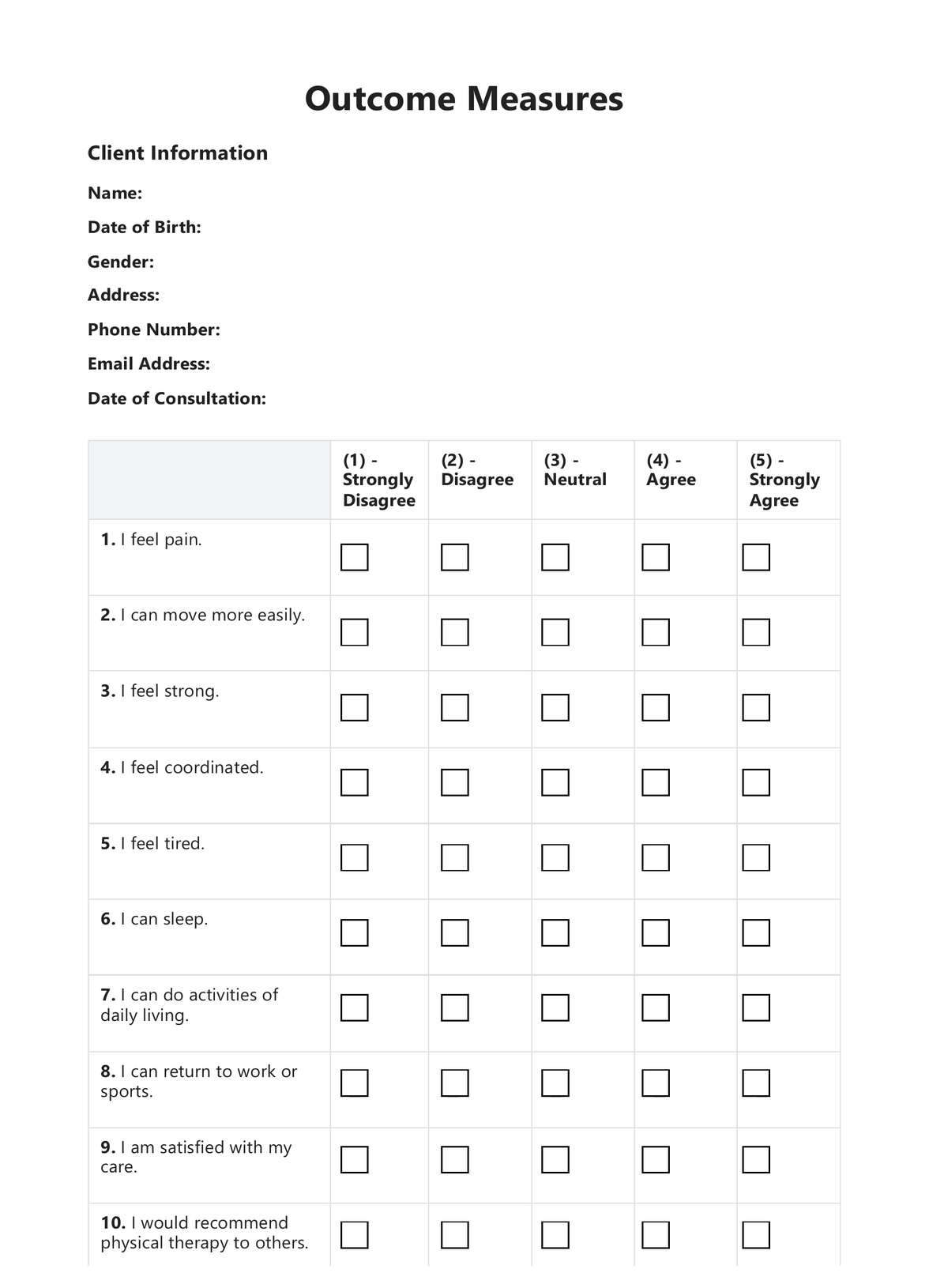Selecting the proper outcome measures involves considering the goals and objectives of the intervention, the target population, and the specific outcomes being assessed. It is essential to choose valid and reliable measures that align with the context and objectives of the evaluation.

Outcome Measure
Outcome measures are tools used to assess the effectiveness of interventions and track progress. Access a free outcome measure template and sample here.
Outcome Measure Template
Commonly asked questions
Data for outcome measures can be collected through various methods such as surveys, questionnaires, tests, observations, interviews, and performance assessments. The chosen method should be aligned with the nature of the intervention and the outcomes being measured.
Outcome measures are analyzed by compiling the collected data and conducting statistical analysis. This analysis may include calculating averages, identifying trends, comparing groups, and examining relationships between variables. The goal is to derive meaningful insights from the data and interpret the results.
EHR and practice management software
Get started for free
*No credit card required
Free
$0/usd
Unlimited clients
Telehealth
1GB of storage
Client portal text
Automated billing and online payments











